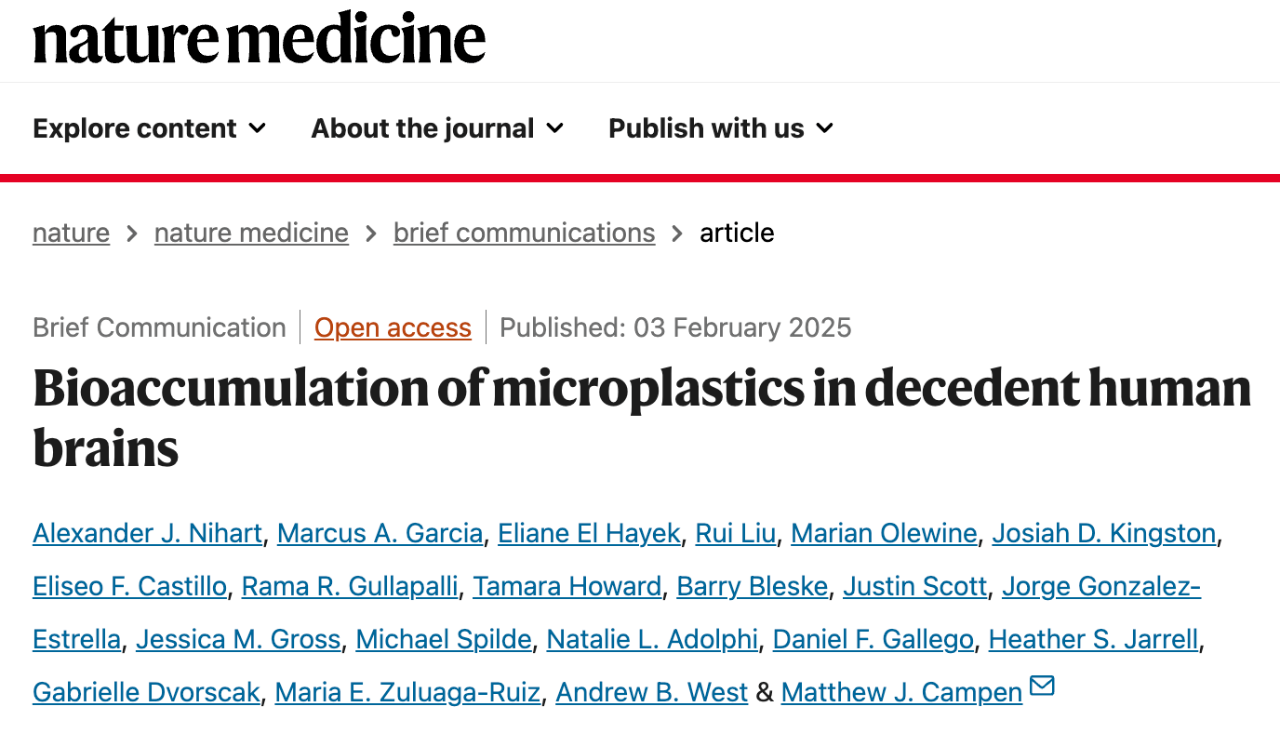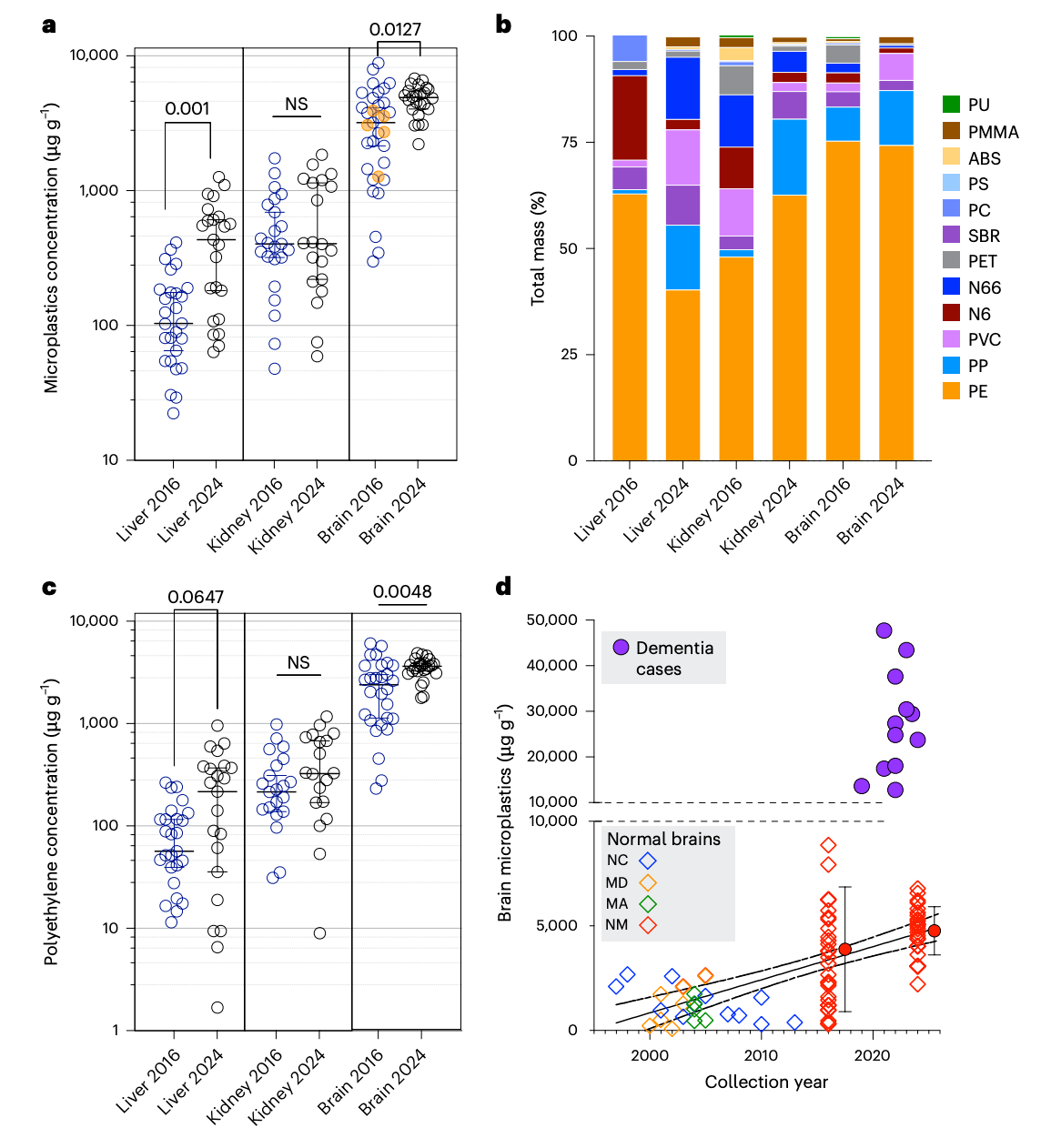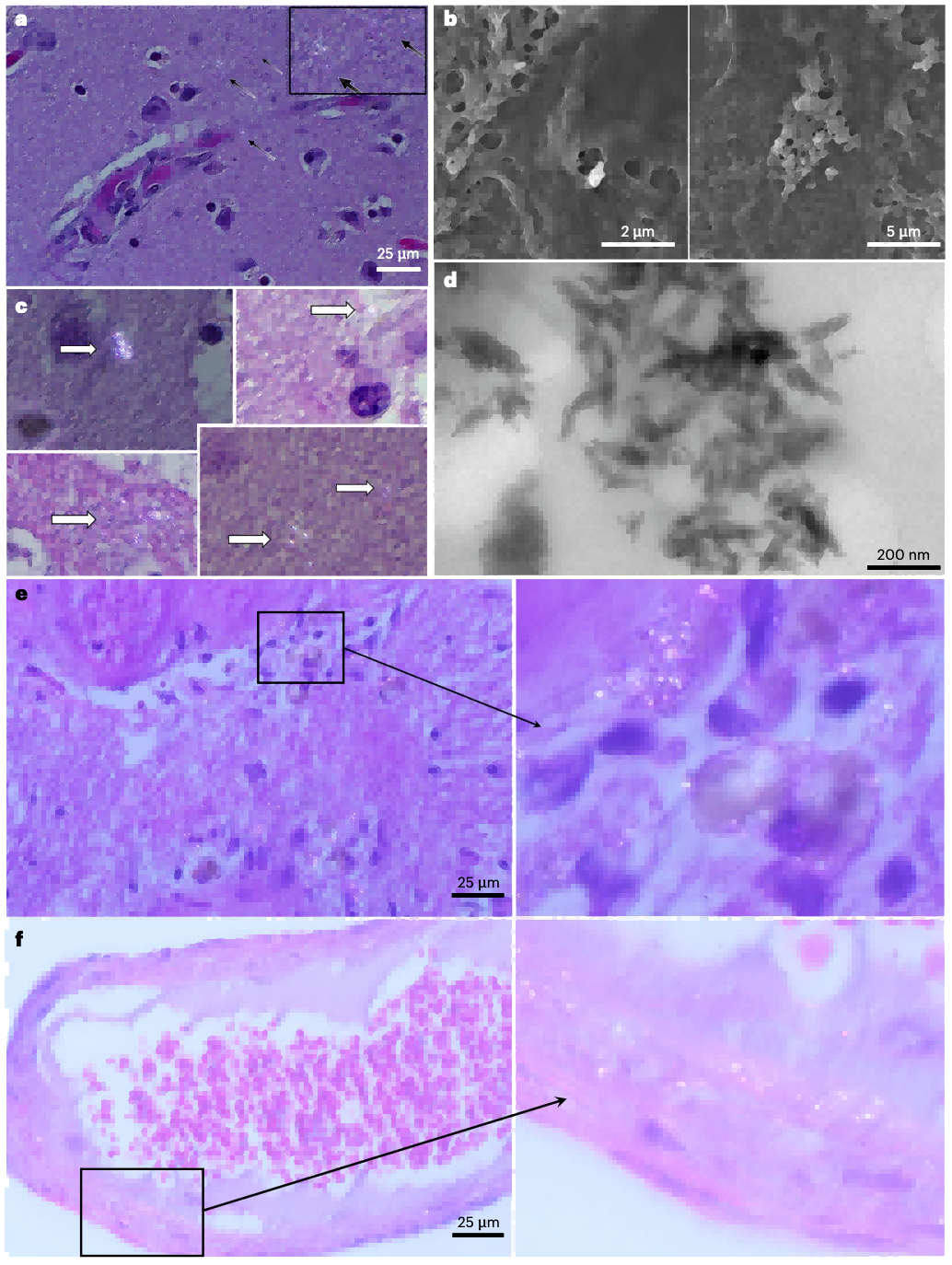Microplastics/nanoplastics (MNP) have become ubiquitous in the environment in recent decades with the widespread use of plastic products. More importantly, a growing number of studies have shown that these microplastics and nanoplastics can accumulate in the human body; however, it is unclear whether they are harmful or toxic to humans.
Most previous studies have used visual microscopy spectroscopy to identify plastic particulate matter in human tissue, but this typically only identifies particulate matter larger than 5 microns in diameter.
On February 3, 2025, researchers at New Mexico Health Sciences University published a research paper entitled: Bioaccumulation of microplastics in decedent human brains in Nature Medicine, a leading international medical journal.
The study confirmed the presence of microplastics/nanoplastics (MNPs), mainly from polyethylene plastics, in the human liver, kidney and brain. The study also found that MNP concentrations were higher in the brain than in the liver and kidneys, and that MNP concentrations increased over time. In addition, people with dementia had significantly higher concentrations of MNP in their brains than those without dementia.
These findings highlight the consequences of increasing concentrations of plastics in the global environment and suggest that there is an urgent need to better understand the exposure, uptake and clearance pathways of microplastics/nanoplastics (MNPs) in human tissues, particularly the brain, and the potential health consequences.

1. Research Background
Microplastics/nanoplastics (MNPs) are polymer particles with diameters ranging from 1 nm to 500 µm, and the concentration of microplastics/nanoplastics in the global environment has risen dramatically in recent years, raising concerns about their potential impact on human health. Although studies have shown that microplastics/nanoplastics may be associated with health problems such as cardiovascular disease, knowledge about the distribution and levels of microplastics/nanoplastics in human tissues and their health consequences is still limited.
2. Research Methods
To detect microplastics/nanoplastics in human tissues, the research team used a variety of complementary methods, including pyrolysis gas chromatography-mass spectrometry (Py-GC/MS), attenuated total reflectance Fourier transform infrared spectroscopy (ATR-FTIR), and electron microscopy coupled with energy spectroscopy (SEM-EDS). These methods were able to detect microplastics/nanoplastics, especially polymers such as polyethylene (PE), in human kidneys, livers and brains.
3. Key Findings
Distribution of microplastics/nanoplastics in human tissues: It was found that the concentration of microplastics/nanoplastics in the brain was significantly higher than in the liver and kidney. The microplastics/nanoplastics in the brain were mainly composed of polyethylene (PE) and the concentration of microplastics/nanoplastics in the liver and brain increased significantly over time (2016 to 2024).

Morphology of microplastics/nanoplastics: Through electron microscopy, microplastics/nanoplastics in the brain were found to be predominantly nanoscale, fragmented particles, usually less than 200 nanometers in size.
Relationship between microplastics/nanoplastics and dementia: The study found that the concentration of microplastics/nanoplastics in the brains of dementia patients (especially in the walls of cerebral blood vessels and around immune cells) was significantly higher than that in normal brain samples, suggesting that microplastics/nanoplastics may be associated with neurodegenerative diseases. However, the study did not prove a causal relationship between microplastics/nanoplastics and dementia.

4. Research findings
The results of the study show that the accumulation of plastics/nanoplastics in the human brain is on the rise, especially polymers such as polyethylene (PE). Concentrations of plastics/nanoplastics in the brain were significantly higher than in the liver and kidney, and were higher in the brains of patients with dementia. These findings suggest that plastics/nanoplastics may play an important role in neurodegenerative diseases, but further research is needed to determine their specific health effects.
5. Future Outlook
The study notes that although this study reveals a trend in the accumulation of plastics/nanoplastics in the human brain, further research is needed to clarify the exposure pathways, uptake and clearance mechanisms of plastics/nanoplastics, as well as their specific effects on human health. In particular, future studies should focus on the role of plastics/nanoplastics in neurological disorders and develop more precise analytical methods to detect and quantify the distribution of plastics/nanoplastics in human tissues.
Overall, this paper reveals the accumulation of plastics/nanoplastics in the human brain through a variety of advanced analytical techniques, particularly the presence of polymers such as polyethylene (PE) in high concentrations. It was also found that the concentration of plastics/nanoplastics in the brains of dementia patients was significantly higher than in normal samples, suggesting that plastics/nanoplastics may be associated with neurodegenerative diseases. This finding provides a new direction for future research and emphasizes the need to further explore the impact of plastics/nanoplastics on human health.






Post comments